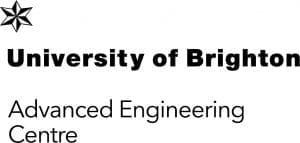The Split Cycle Engine, flagship of the AEC, is a novel engine architecture where the phases of expansion and compression happen in two separate cylinders. It was reported that the engine can realistically approach brake efficiencies of 60%, which represents an almost 20% step improvement over current advanced heavy-duty diesel engines, all of this along with exceptionally low NOx emissions. New work by PhD student Simon Harvey, along with Dr. Konstantina Vogiatzaki, Dr. Guillaume de Sercey and Prof. Robert Morgan from the AEC, and finally with the collaboration of William Redpath from the Advanced Manufacturing Research Centre at the University of Sheffield, has recently been carried out.
This work looks to start explaining why this new engine architecture provides such low emissions, by means of a theoretical investigation as well as optical visualization of the flow field.
It was found that there is a form of enhanced mixing but lower reactivity compared to a conventional diesel internal combustion engine (ICE). From the test bed data, three hypothesis are proposed suggesting that the enhanced mixing is driven by increased velocity, swirl and micro-turbulence on one side, by impinging jet, airblast and crossflow atomisation and finally from pressure and shock waves. Optical techniques such as Schlieren imaging are used to discuss these hypothesis. These images agree with past simulation work, showing that the flow is supersonic and that bow shocks and Mach disks are created in the flow field, and penetrates substantially into the combustion chamber. Supersonic flow, bow shocks and Mach disks are not found in conventional ICEs, making their presence in split cycle engine unique.
Further investigation is needed to understand and improve the mixing and combustion in the split cycle engine and ascertain the fundamental processes affecting air injection, fuel mixing and combustion events.
Further information on the split cycle engine can be found in the following work:
The Recuperated Split Cycle – Experimental Combustion Data from a Single Cylinder Test Rig
The Ultra Low Emissions Potential of the Recuperated Split Cycle Combustion System
Thermodynamic analysis and system design of a novel split cycle engine concept






Leave a Reply